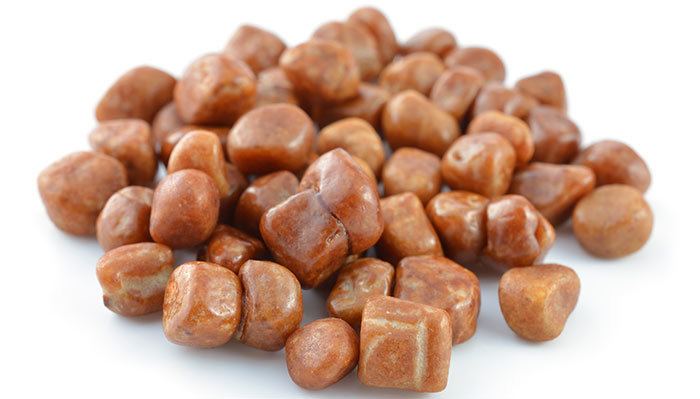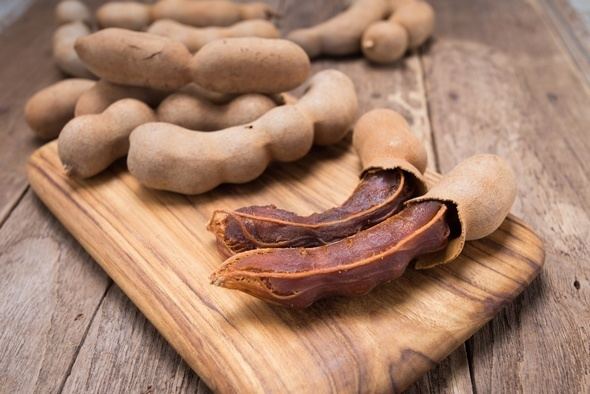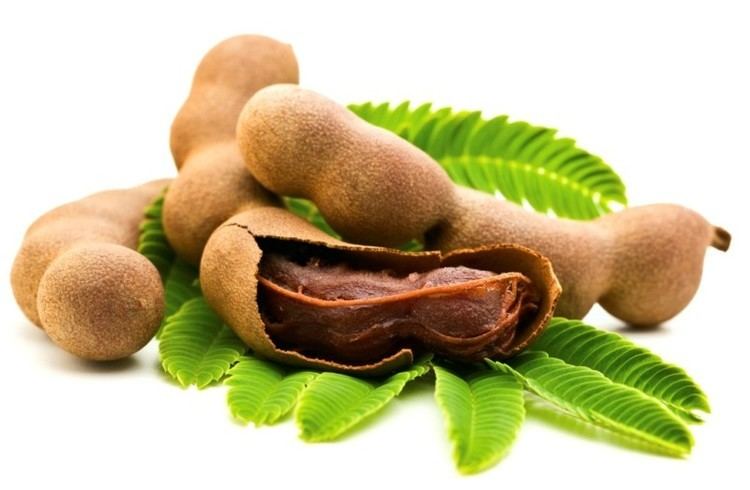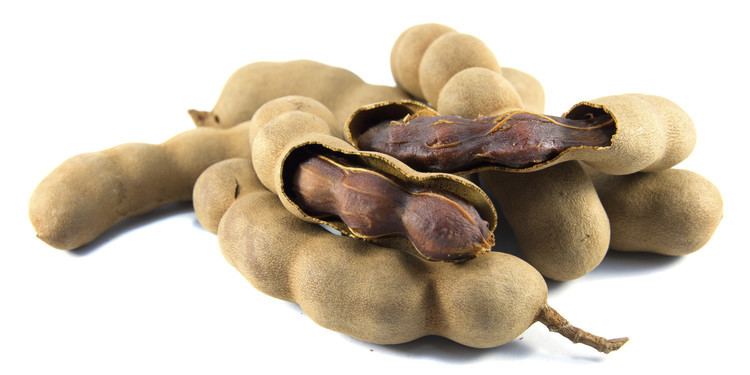Genus TamarindusL. Rank Species | Scientific name Tamarindus indica Higher classification Tamarindus | |
 | ||
Similar Turmeric, Water, Coriander, Chili pepper, Sugar | ||
Tamarind (Tamarindus indica) is a leguminous tree in the family Fabaceae indigenous to tropical Africa. The genus Tamarindus is a monotypic taxon, having only a single species.
Contents
- Tamarind tree tamarindus indica
- Origin
- Description
- Etymology
- Cultivation
- Culinary
- Folk medicine
- Woodworking
- Metal polish
- Horticulture
- Research
- References

The tamarind tree produces edible, pod-like fruit which is used extensively in cuisines around the world. Other uses include traditional medicine and metal polish. The wood can be used for woodworking. Because of the tamarind's many uses, cultivation has spread around the world in tropical and subtropical zones.

Tamarind tree tamarindus indica
Origin

Tamarindus indica is probably indigenous to tropical Africa, but has been cultivated for so long on the Indian subcontinent that it is sometimes also reported to be indigenous there, where it is known as imli in Hindi-Urdu. It grows wild in Africa in locales as diverse as Sudan, Cameroon, Nigeria, and Tanzania. In Arabia, it is found growing wild in Oman, especially Dhofar, where it grows on the sea-facing slopes of mountains. It reached South Asia likely through human transportation and cultivation several thousand years prior to the Common Era. It is widely distributed throughout the tropical belt, from Africa to South Asia, northern Australia, and throughout Oceania, Southeast Asia, Taiwan and China.

In the 16th century, it was introduced to Mexico, and to a lesser degree to South America, by Spanish and Portuguese colonists, to the degree that it became a staple ingredient in the region's cuisine.
Today, India is the largest producer of tamarind. The consumption of tamarind is widespread due to its central role in the cuisines of the Indian subcontinent, Southeast Asia and the Americas, particularly Mexico.
Description
The tamarind is a long-lived, medium-growth shrub, which attains a maximum crown height of 12 to 18 metres (39 to 59 ft). The crown has an irregular, vase-shaped outline of dense foliage. The tree grows well in full sun in clay, loam, sandy, and acidic soil types, with a high resistance to drought and aerosol salt (wind-borne salt as found in coastal areas).
The evergreen leaves are alternately arranged and pinnately compound. The leaflets are bright green, elliptical ovular, pinnately veined, and less than 5 cm (2.0 in) in length. The branches droop from a single, central trunk as the tree matures and is often pruned in agriculture to optimize tree density and ease of fruit harvest. At night, the leaflets close up.
The tamarind does flower, though inconspicuously, with red and yellow elongated flowers. Flowers are 2.5 cm wide (one inch), five-petalled, borne in small racemes, and yellow with orange or red streaks. Buds are pink as the four sepals are pink and are lost when the flower blooms.
The fruit is an indehiscent legume, sometimes called a pod, 12 to 15 cm (4.7 to 5.9 in) in length, with a hard, brown shell.
The fruit has a fleshy, juicy, acidulous pulp. It is mature when the flesh is coloured brown or reddish brown. The tamarinds of Asia have longer pods containing six to 12 seeds, whereas African and West Indian varieties have short pods containing one to six seeds. The seeds are somewhat flattened, and glossy brown.
The tamarind is best described as sweet and sour in taste, and is high in tartaric acid, sugar, B vitamins, and, unusually for a fruit, calcium.
As a tropical species, it is frost sensitive. The pinnate leaves with opposite leaflets give a billowing effect in the wind. Tamarind timber consists of hard, dark red heartwood and softer, yellowish sapwood.
It is harvested by pulling the pod from its stalk. A mature tree may be capable of producing up to 175 kg (386 lb) of fruit per year. Veneer grafting, shield (T or inverted T) budding, and air layering may be used to propagate desirable selections. Such trees will usually fruit within three to four years if provided optimum growing conditions.
Etymology
The name derives from Arabic: تمر هندي, romanized tamar hindi, "Indian date". Several early medieval herbalists and physicians wrote tamar indi, medieval Latin use was tamarindus, and Marco Polo wrote of tamarandi.
In Colombia, Cuba, Dominican Republic, Mexico, Peru, Puerto Rico, Venezuela, Italy, Spain, and throughout the Lusosphere, it is called tamarindo. In those countries it is often used to make the beverage of the same name. In the Caribbean, tamarind is sometimes called tamón. Tamarind (Tamarindus indica) is sometimes confused with "Manila tamarind" (Pithecellobium dulce). While in the same taxonomic family Fabaceae, Manila tamarind is a different plant native to Mexico and known locally as guamúchil.
Cultivation
Seeds can be scarified or briefly boiled to enhance germination. They retain germination capability after several months if kept dry.
The tamarind has also long been naturalized in Indonesia, Malaysia, Sri Lanka, Philippines, the Caribbean, and the Pacific Islands. Thailand has the largest plantations of the ASEAN nations, followed by Indonesia, Myanmar, and the Philippines. The pulp is marketed in northern Malaya. It is cultivated all over India, especially in the Indian states of Maharashtra, Chhattisgarh, Karnataka, Andhra Pradesh, and Tamil Nadu. Extensive tamarind orchards in India produce 275,500 tons (250,000 MT) annually. Commercial plantations throughout tropical Latin America include Brazil, Costa Rica, Colombia, Cuba, Guatemala, Mexico, Nicaragua, Peru, Puerto Rico, and Venezuela.
In the United States, it is a large-scale crop introduced for commercial use, second in net production quantity to India, in the mainly southern states due to tropical and semitropical climes, notably south Florida, and as a shade and fruit tree, along roadsides and in dooryards and parks.
Culinary
The fruit pulp is edible. The hard green pulp of a young fruit is considered by many to be too sour, but is often used as a component of savory dishes, as a pickling agent or as a means of making certain poisonous yams in Ghana safe for human consumption.
The ripened fruit is considered the more palatable, as it becomes sweeter and less sour (acidic) as it matures. It is used in desserts, as a jam, blended into juices, or sweetened drinks, sorbets, ice creams and other snacks. In Western cuisine, it is found in Worcestershire Sauce. In most parts of India, tamarind extract is used to flavor foods ranging from meals to snacks, and tamarind sweet chutney is popular in India and Pakistan as a dressing for many snacks. Tamarind pulp is a key ingredient in flavoring curries and rice in south Indian cuisine, as well as in the Chigali lollipop. Across the Middle East, from the Levant to Iran, tamarind is used in savory dishes, notable meat-based stews, and often combined with dried fruits to achieve a sweet-sour tang.
A traditional food plant in Africa, tamarind has the potential to improve nutrition, boost food security, foster rural development and support sustainable landcare.
In Madagascar, its fruits and leaves are a well-known favorite of the ring-tailed lemurs, providing as much as 50 percent of their food resources during the year if available.
Folk medicine
Throughout Southeast Asia, the fruit of the tamarind is used as a poultice applied to foreheads of fever sufferers.
Tamarind fruit exhibits laxative effects due to its high quantities of malic acid, tartaric acid, and potassium bitartrate. Its use for the relief of constipation has been documented throughout the world including Thailand, southern West Africa, and Madagascar.
Woodworking
Tamarind lumber is used to make furniture, carvings, turned objects, chopping blocks, and other small specialty wood items. Tamarind heartwood is reddish brown, sometimes with a purplish hue. The heartwood in tamarind tends to be narrow and is usually only present in older and larger trees. The pale yellow sapwood is sharply demarcated from the heartwood. Heartwood is said to be durable to very durable in decay resistance, and is also resistant to insects. Its sapwood is not durable and is prone to attack by insects and fungi as well as spalting. Due to its density and interlocked grain, tamarind is considered difficult to work. Heartwood has a pronounced blunting effect on cutting edges. Tamarind turns, glues, and finishes well. The heartwood is able to take a high natural polish.
Metal polish
In homes and temples, especially in Buddhist Asian countries, the fruit pulp is used to polish brass shrine statues and lamps, and copper, brass, and bronze utensils. The copper alone or in brass reacts with moist carbon dioxide to gain a green coat of copper carbonate. Tamarind contains tartaric acid, a weak acid that can remove the coat of copper carbonate. Hence, tarnished copper utensils are cleaned with tamarind or lime, another acidic fruit.
Horticulture
Throughout Asia and the tropical world, tamarind trees are used as ornamental, garden, and cash crop plantings. Commonly used as a bonsai species in many Asian countries, it is also grown as an indoor bonsai in temperate parts of the world.
Research
In hens, tamarind has been found to lower cholesterol in their serum, and in the yolks of the eggs they laid. Due to a lack of available human clinical trials, there is insufficient evidence to recommend tamarind for the treatment of hypercholesterolemia or diabetes.
